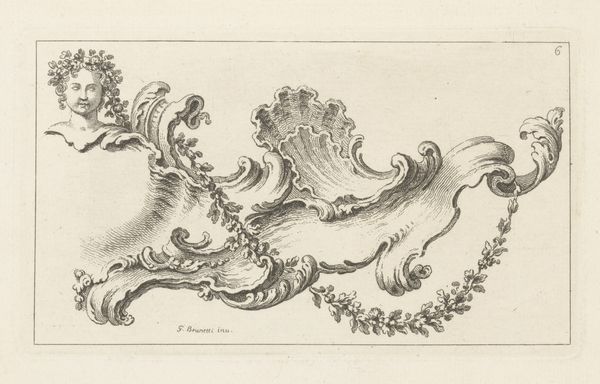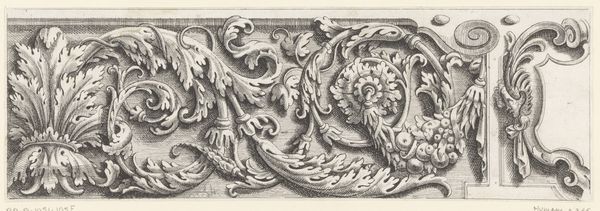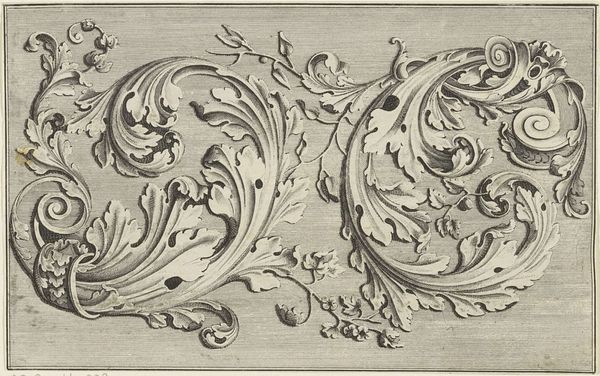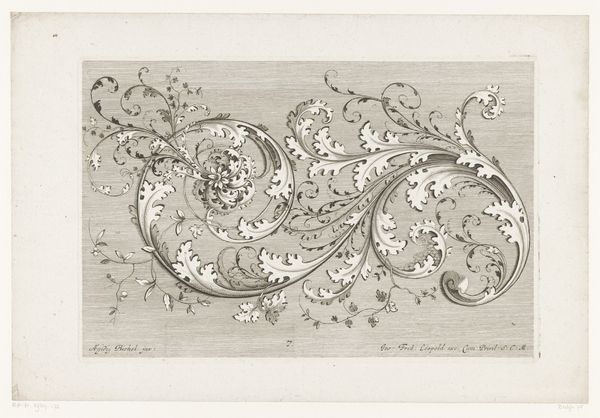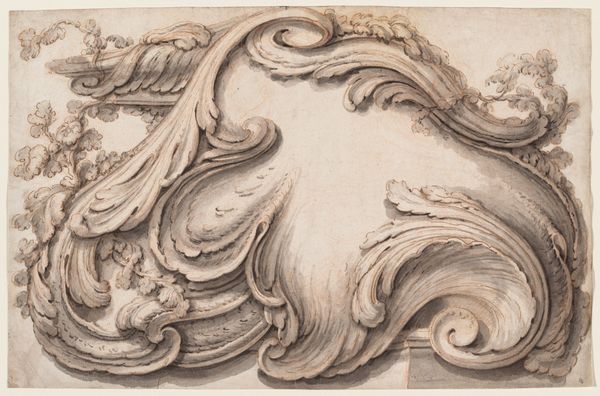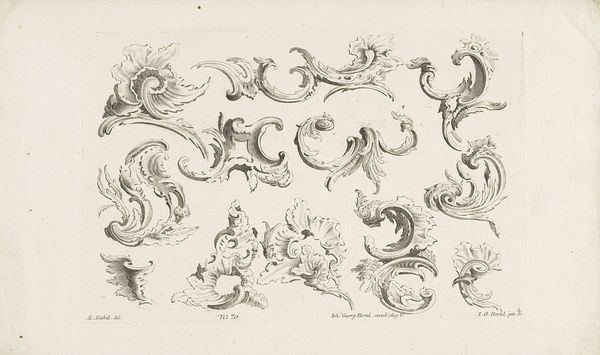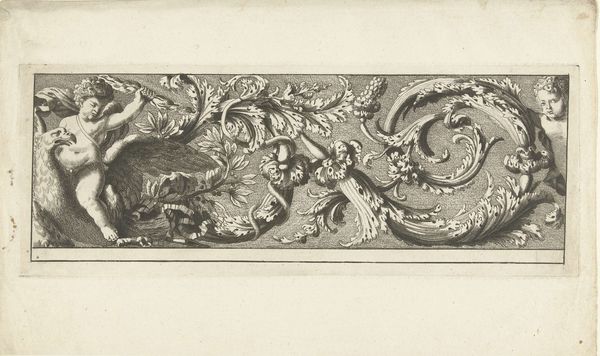
Dimensions: height 47 mm, width 127 mm
Copyright: Rijks Museum: Open Domain
This is an ornamental design with a putto and acanthus leaves, made by Edward Edwards sometime before 1806 using etching. Look closely, and you'll notice the fine lines that define the composition. The etcher would have covered a metal plate with a waxy ground, drawn this composition into it, and then bathed the plate in acid, which bites into the exposed lines. This is then printed, leaving us with the image you see here. What's fascinating about this print is how it showcases the artist's mastery over a technique developed to reproduce designs for practical use. These motifs could be applied to furniture, ceramics, or even architecture. Edwards, with his skilled hand, wasn't just creating art; he was enabling a broader aesthetic vision, influencing the look and feel of everyday objects, and driving consumer culture of the time. This makes you wonder how many objects were eventually made with this design? So, next time you encounter a decorative object, remember that it may be a part of a larger story, one that blurs the lines between art, craft, and industry.
Comments
No comments
Be the first to comment and join the conversation on the ultimate creative platform.
